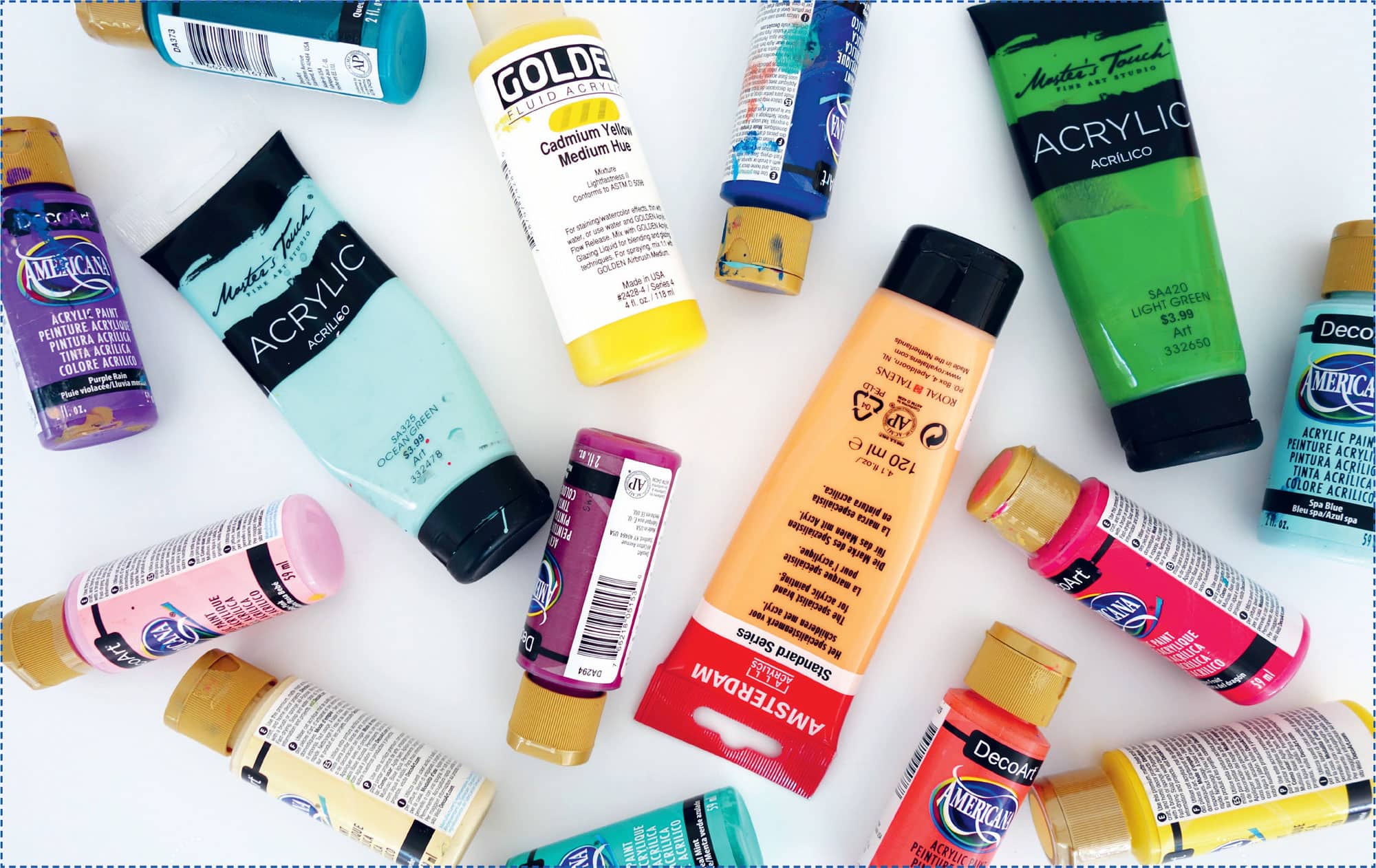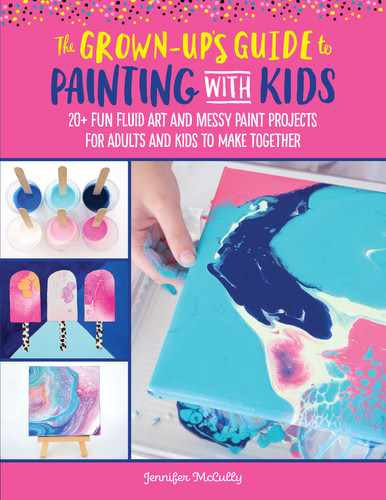TOOLS & MATERIALS
You can use a wide variety of tools and materials for paint pouring. Most of the supplies are affordable and easy to find in craft stores, art-supply stores, home-improvement stores, and in grocery and dollar stores, as well as online.
POURING SURFACES
CANVAS is my favorite surface to pour on. Canvases are offered in a variety of shapes, sizes, and thicknesses. They are sold in craft stores, art-supply stores, and online—either individually or in multipacks—making canvas an economical surface for fluid art. Kids will love working on canvas, as the finished artwork is easy to display.

CERAMIC TILES are perfect for creating coasters and magnets. They can be found at home-improvement stores and in tile and floor retailers.
CRAFTWRAP™, or plaster cloth, is a gauzelike bandage material that’s easy to use for various plaster projects and the “With All My Heart” project (shown here). It can be found online and in craft stores.
CARDBOARD can be cut up to make shapes for paint-pouring projects, so save those boxes from your online orders! Cardboard does warp when used in fluid-art projects; however, if your cardboard pieces are small enough, warping should not occur.
ACRYLIC PAINT
Fluid-art projects are usually made from acrylic paint. There are many brands to choose from; however, I recommend keeping it simple and using inexpensive acrylic paints offered in a wide variety of colors. When creating with kids, inexpensive acrylic paints, also known as craft paints, offer the perfect consistency for pouring—not too thin and not too thick. If you prefer to use more expensive, artist-grade paints, that’s fine too.

POURING MEDIUMS
Pouring mediums are added to acrylic paint to make the paint thinner and more fluid. Different brands are available and can be found at craft stores, art-supply stores, and online. The projects in this book use Floetrol®, a popular pouring medium that can be found in the paint section of home-improvement stores.

BASIC SUPPLIES FOR YOUR CREATIVE SPACE
It is important to properly set up your painting space. When your space is set up properly, you and your kids can create piece after piece without worrying about disrupting your creative energy if paint accidentally oozes off the edge of the canvas. Prepping your space with a clear drop cloth or an inexpensive vinyl tablecloth works best. Make sure the area is large enough for you and a child to work together with space to create more than one project at a time in case you end up with leftover paint that you want to use immediately.
Also, designate a place for your artwork to dry. Fluid art can take up to 48 hours to dry completely, depending on the size of the artwork and the thickness of the paint. Your artwork should lie completely flat and stay in one spot so that additional shifting or flowing does not occur during the drying process.

